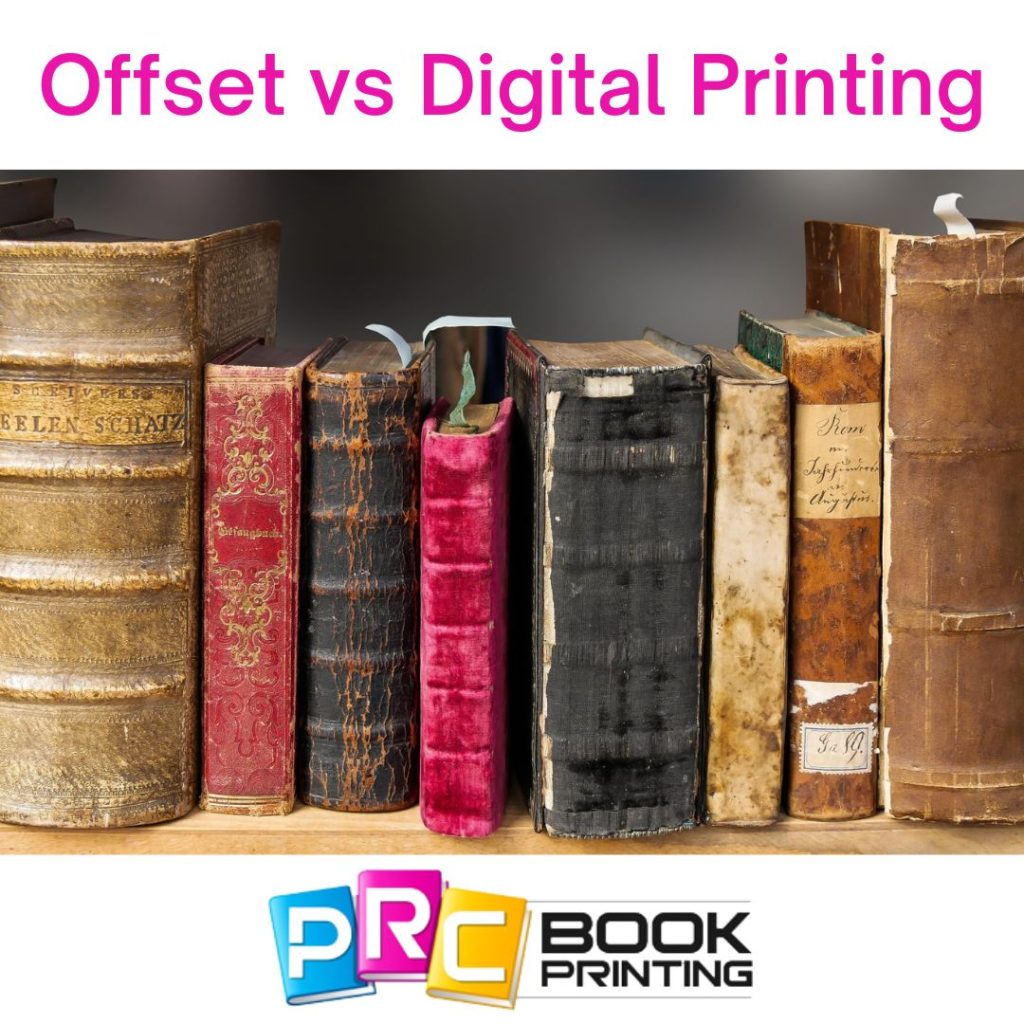Finally, after months of edits and rewrites, your manuscript is ready. You know that your book will be the next New York Times bestseller. So in your mind, it’s a foregone conclusion to print your book.
But do you go with offset vs. digital printing for your book printing? If you have no clue about the printing process, this article is for you. And if you’re self-publishing, knowing the cost points of these services is a book-marketing must.
After all, why set up your book tour today if the offset printing won’t be done until months later?
Together, you will master the differences between offset and digital printing. So, my esteemed authors, the only move left for book-making is how to design your book cover.
Offset Printing
Also known as lithography, offset printing was the “undisputed book printing standard.” Offset book printing involves a series of plates. Each plate comes with a specific ink color.
These ink-filled plates go on a printing rubber sheet before going on the book covers and printing pages. Throughout the printing processes, the plates don’t touch the printing surface.
Offset Printing Advantages
If you are planning on a long book-marketing run, consider offset printing. The larger the printing job, the lower the printing price. Offset printing runs on the philosophy that inks don’t mix with the water.
Also, offset printers can control ink levels and usage during printing. This help with consistent colors and less washed-out images. The cost of making offset printing plates is inexpensive.
Offset vs. digital printing involves more printing surfaces. Unlike digital printing, offset printers can use leather, vinyl, fabrics, metals, and more. But, of course, you can get offset book printing services with us.
Offset Printing Disadvantages
If you only want to print a handful of books, offset might not be a cost-effective choice. One of the significant differences between offset and digital printing is time. Offset book printing can take a month and a half to eight weeks.
A big part of the delay is the creation of the plates. Because these plates have aluminum, they can corrode over time.
Digital Book Printing
Digital book printing is a newer printing process for small and short printing runs. If you’re self-publishing or a small company, digital printing is the more affordable choice.
Digital printing, unlike offset printing, prints high-quality images and text directly onto the surface. Therefore, there’s no need for plates or setup. Instead, a computer handles the documents, photos, and book formatting.
Digital Printing Advantages
Digital book printing is significantly faster than offset printing. As a result, you can print a single book or a higher volume of books.
Digital printing inks are easier to come by than offset printing. As a result, digital printing yields more printing choices. Digital printing uses water-based inks.
- Inkjet and laser printers
- Digital press printing
- Solid ink printing
- Heat transfer printing
Digital press printing works best for large book printing orders.
Digital Printing Disadvantages
Digital book printing isn’t as cost-effective for large orders. Also, digital presses don’t handle PMS colors as well as offset printing. One of the biggest differences between offset and digital printing processes is the printing options.
Digital printing can’t print on as many surfaces as offset printing.
More on Offset vs. Digital Printing
Hopefully, you understand better the differences between offset and digital printing. If you have further questions about offset vs. digital printing, don’t hesitate to contact us.
We provide affordable and professional custom printing solutions. If you are looking for hardback printing, we have you covered. Our expertise also extends to high-quality children’s book printing.
Feel free to explore our resources page for a deeper look at our printing and designing services. In addition, you can find our paperback and hardback cover options. We also offer pre-press services to introduce the world to your literary masterpiece.

